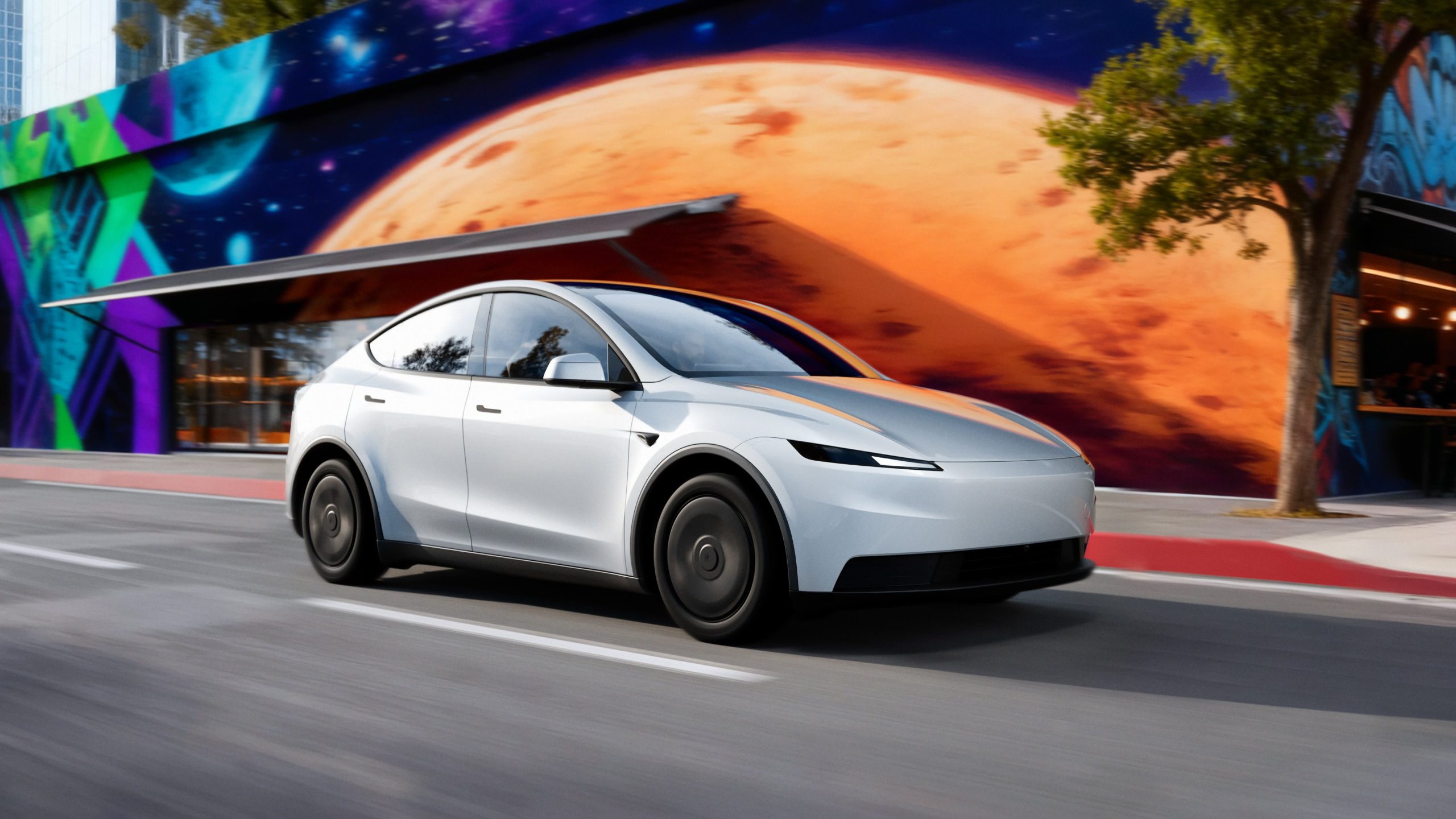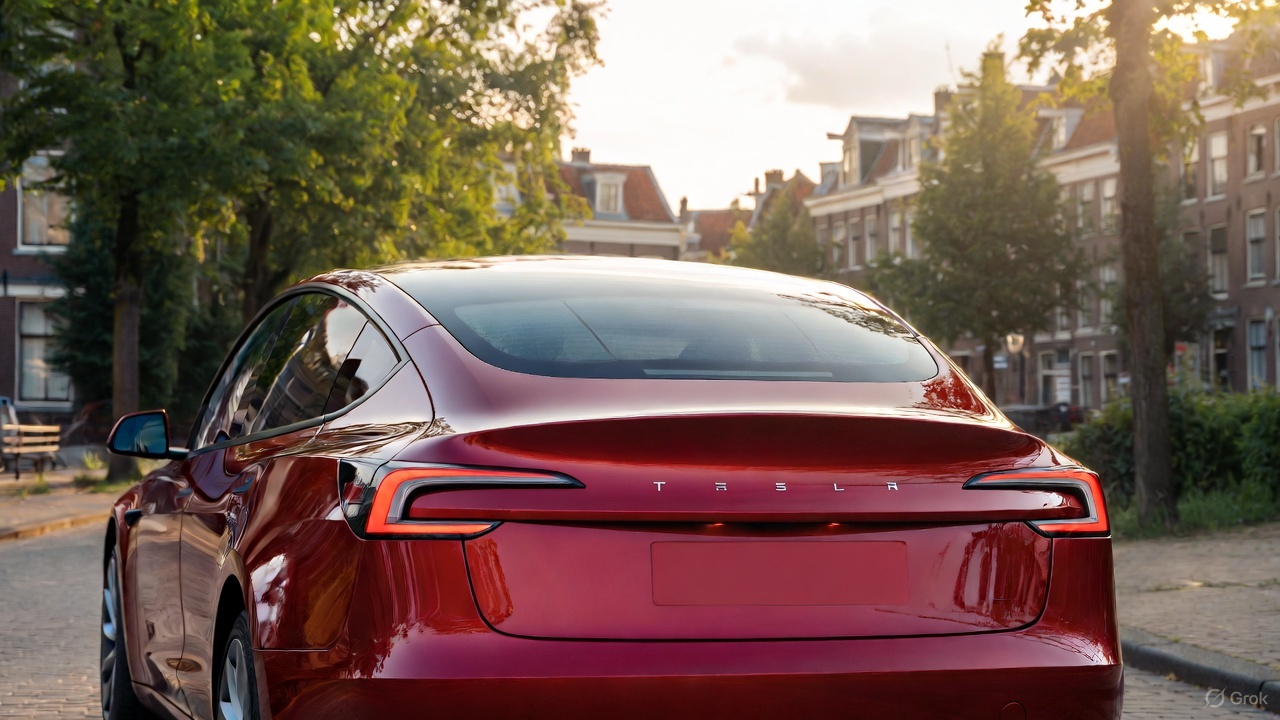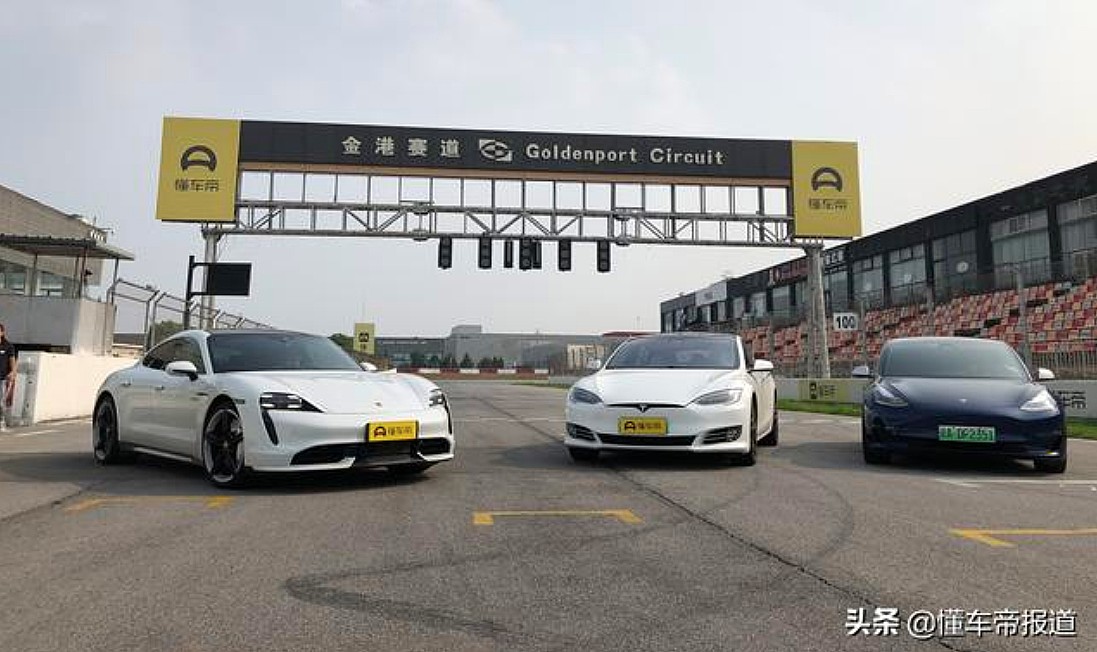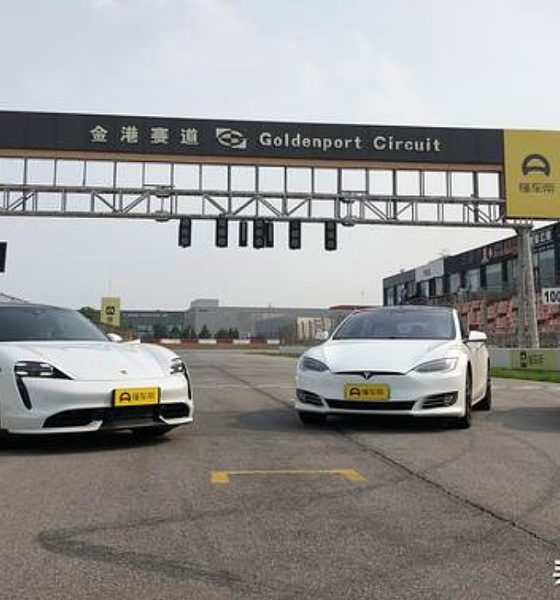There’s no denying that the Porsche Taycan Turbo is an incredible electric car on the track. Refined on the cruel turns of the Nurburgring, the Taycan embodies Porsche’s racing pedigree in an all electric package. This is why it was quite surprising to see such a vehicle bow down to a far more affordable and understated adversary: the Tesla Model 3 Performance.
China’s premier motoring site, Dongchedi, recently conducted a 24-hour test of the Porsche Taycan Turbo, benchmarking the vehicle against the Tesla Model S Performance and Model 3 Performance with Track Package. The news agency performed three main tests for the Taycan, which included a drag race and endurance test against the Model S and a time attack track run against the Model 3 Performance.
The Taycan Turbo is one of the most expensive electric cars in China. Commanding a price of RMB 1,498,000 (around USD 214,238) in the local market, the Taycan Turbo is over three times more expensive than the Model 3 Performance, which is priced at RMB 419,800 (around USD 60,038). It should be noted that the Model 3 Performance is still quite pricey in China, seeing as it is not yet being locally produced at Gigafactory Shanghai.
As noted by the motoring site, the Porsche Taycan Turbo actually performed really well during its test. Professional drivers who tested the vehicle over the 24 hour period praised the electric sedan for its driving dynamics, which showcases the best that Porsche has to offer. That being said, the Taycan did bow to the Model S Performance in the drag race, as it finished the quarter mile run in 10.99 seconds, just behind the Model S Performance, which completed the race in 10.56 seconds.
The Taycan Turbo also did well on its battery endurance test, running 452 km in one charge and impressively close to its NEDC rating of 462 km. In contrast, Tesla’s flagship sedan was able to run 505 km before it ran out of battery, 145 km less than its NEDC rating of 650 km.
For the Porsche Taycan Turbo’s track test, the Dongchedi team brought the vehicle to its closed circuit for a hot lap time attack test. But this time around, the Taycan Turbo had an additional competitor: the Tesla Model 3 Performance with Track Package. The Taycan Turbo showed its racing pedigree in the test, decimating the Model S Performance’s track time of 1:19:26 with its impressive 1:15:97 run.
However, the German made electric car’s win was short lived, as the much more affordable Model 3 was able to complete its hot lap in 1:15:78. Granted, the gap between the time attack results of the Porsche Taycan Turbo and the Model 3 Performance was very slim. Despite this, it is difficult not to be impressed by Tesla’s most affordable performance branded car.
There are very few cars out there in the Model 3 Performance’s price range that could give the Taycan Turbo some competition, after all, and there are even fewer that can actually humble the proud German made EV in an area that it’s designed to dominate. With such results, it would not be surprising if the Model 3 Performance becomes the vehicle of choice for the country’s mainstream racing enthusiasts, seeing as it offers performance that can compete with a Porsche on the track — at a fraction of the price.

Elon Musk
Tesla CEO Elon Musk sends rivals dire warning about Full Self-Driving

Tesla CEO Elon Musk revealed today on the social media platform X that legacy automakers, such as Ford, General Motors, and Stellantis, do not want to license the company’s Full Self-Driving suite, at least not without a long list of their own terms.
“I’ve tried to warn them and even offered to license Tesla FSD, but they don’t want it! Crazy,” Musk said on X. “When legacy auto does occasionally reach out, they tepidly discuss implementing FSD for a tiny program in 5 years with unworkable requirements for Tesla, so pointless.”
I’ve tried to warn them and even offered to license Tesla FSD, but they don’t want it! Crazy …
When legacy auto does occasionally reach out, they tepidly discuss implementing FSD for a tiny program in 5 years with unworkable requirements for Tesla, so pointless. 🤷♂️
🦕 🦕
— Elon Musk (@elonmusk) November 24, 2025
Musk made the remark in response to a note we wrote about earlier today from Melius Research, in which analyst Rob Wertheimer said, “Our point is not that Tesla is at risk, it’s that everybody else is,” in terms of autonomy and self-driving development.
Wertheimer believes there are hundreds of billions of dollars in value headed toward Tesla’s way because of its prowess with FSD.
A few years ago, Musk first remarked that Tesla was in early talks with one legacy automaker regarding licensing Full Self-Driving for its vehicles. Tesla never confirmed which company it was, but given Musk’s ongoing talks with Ford CEO Jim Farley at the time, it seemed the Detroit-based automaker was the likely suspect.
Tesla’s Elon Musk reiterates FSD licensing offer for other automakers
Ford has been perhaps the most aggressive legacy automaker in terms of its EV efforts, but it recently scaled back its electric offensive due to profitability issues and weak demand. It simply was not making enough vehicles, nor selling the volume needed to turn a profit.
Musk truly believes that many of the companies that turn their backs on FSD now will suffer in the future, especially considering the increased chance it could be a parallel to what has happened with EV efforts for many of these companies.
Unfortunately, they got started too late and are now playing catch-up with Tesla, XPeng, BYD, and the other dominating forces in EVs across the globe.
News
Tesla backtracks on strange Nav feature after numerous complaints

Tesla is backtracking on a strange adjustment it made to its in-car Navigation feature after numerous complaints from owners convinced the company to make a change.
Tesla’s in-car Navigation is catered to its vehicles, as it routes Supercharging stops and preps your vehicle for charging with preconditioning. It is also very intuitive, and features other things like weather radar and a detailed map outlining points of interest.
However, a recent change to the Navigation by Tesla did not go unnoticed, and owners were really upset about it.
For trips that required multiple Supercharger stops, Tesla decided to implement a naming change, which did not show the city or state of each charging stop. Instead, it just showed the business where the Supercharger was located, giving many owners an unwelcome surprise.
However, Tesla’s Director of Supercharging, Max de Zegher, admitted the update was a “big mistake on our end,” and made a change that rolled out within 24 hours:
The naming change should have happened at once, instead of in 2 sequential steps. That was a big miss on our end. We do listen to the community and we do course-correct fast. The accelerated fix rolled out last night. The Tesla App is updated and most in-car touchscreens should…
— Max (@MdeZegher) November 20, 2025
The lack of a name for the city where a Supercharging stop would be made caused some confusion for owners in the short term. Some drivers argued that it was more difficult to make stops at some familiar locations that were special to them. Others were not too keen on not knowing where they were going to be along their trip.
Tesla was quick to scramble to resolve this issue, and it did a great job of rolling it out in an expedited manner, as de Zegher said that most in-car touch screens would notice the fix within one day of the change being rolled out.
Additionally, there will be even more improvements in December, as Tesla plans to show the common name/amenity below the site name as well, which will give people a better idea of what to expect when they arrive at a Supercharger.
News
Dutch regulator RDW confirms Tesla FSD February 2026 target
The regulator emphasized that safety, not public pressure, will decide whether FSD receives authorization for use in Europe.

The Dutch vehicle authority RDW responded to Tesla’s recent updates about its efforts to bring Full Self-Driving (Supervised) in Europe, confirming that February 2026 remains the target month for Tesla to demonstrate regulatory compliance.
While acknowledging the tentative schedule with Tesla, the regulator emphasized that safety, not public pressure, will decide whether FSD receives authorization for use in Europe.
RDW confirms 2026 target, warns Feb 2026 timeline is not guaranteed
In its response, which was posted on its official website, the RDW clarified that it does not disclose details about ongoing manufacturer applications due to competitive sensitivity. However, the agency confirmed that both parties have agreed on a February 2026 window during which Tesla is expected to show that FSD (Supervised) can meet required safety and compliance standards. Whether Tesla can satisfy those conditions within the timeline “remains to be seen,” RDW added.
RDW also directly addressed Tesla’s social media request encouraging drivers to contact the regulator to express support. While thanking those who already reached out, RDW asked the public to stop contacting them, noting these messages burden customer-service resources and have no influence on the approval process.
“In the message on X, Tesla calls on Tesla drivers to thank the RDW and to express their enthusiasm about this planning to us by contacting us. We thank everyone who has already done so, and would like to ask everyone not to contact us about this. It takes up unnecessary time for our customer service. Moreover, this will have no influence on whether or not the planning is met,” the RDW wrote.
The RDW shares insights on EU approval requirements
The RDW further outlined how new technology enters the European market when no existing legislation directly covers it. Under EU Regulation 2018/858, a manufacturer may seek an exemption for unregulated features such as advanced driver assistance systems. The process requires a Member State, in this case the Netherlands, to submit a formal request to the European Commission on the manufacturer’s behalf.
Approval then moves to a committee vote. A majority in favor would grant EU-wide authorization, allowing the technology across all Member States. If the vote fails, the exemption is valid only within the Netherlands, and individual countries must decide whether to accept it independently.
Before any exemption request can be filed, Tesla must complete a comprehensive type-approval process with the RDW, including controlled on-road testing. Provided that FSD Supervised passes these regulatory evaluations, the exemption could be submitted for broader EU consideration.










